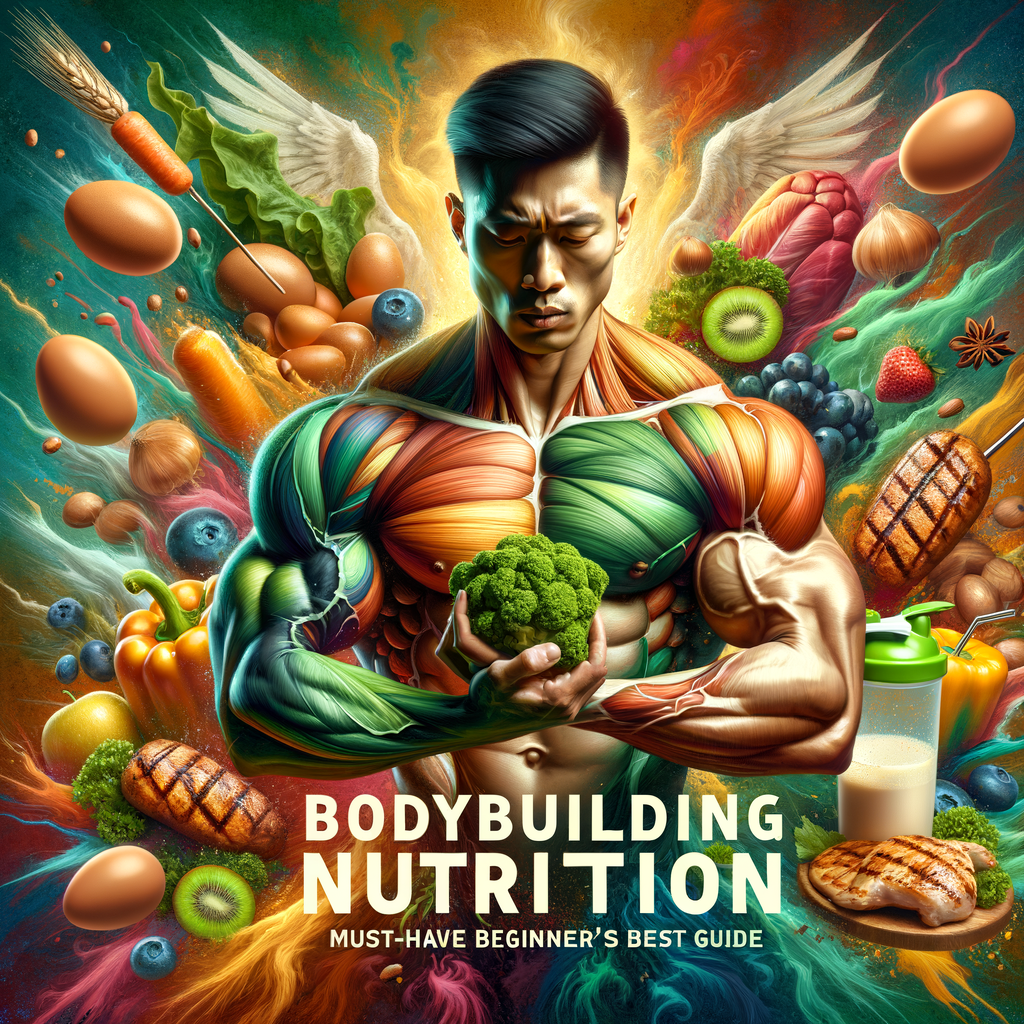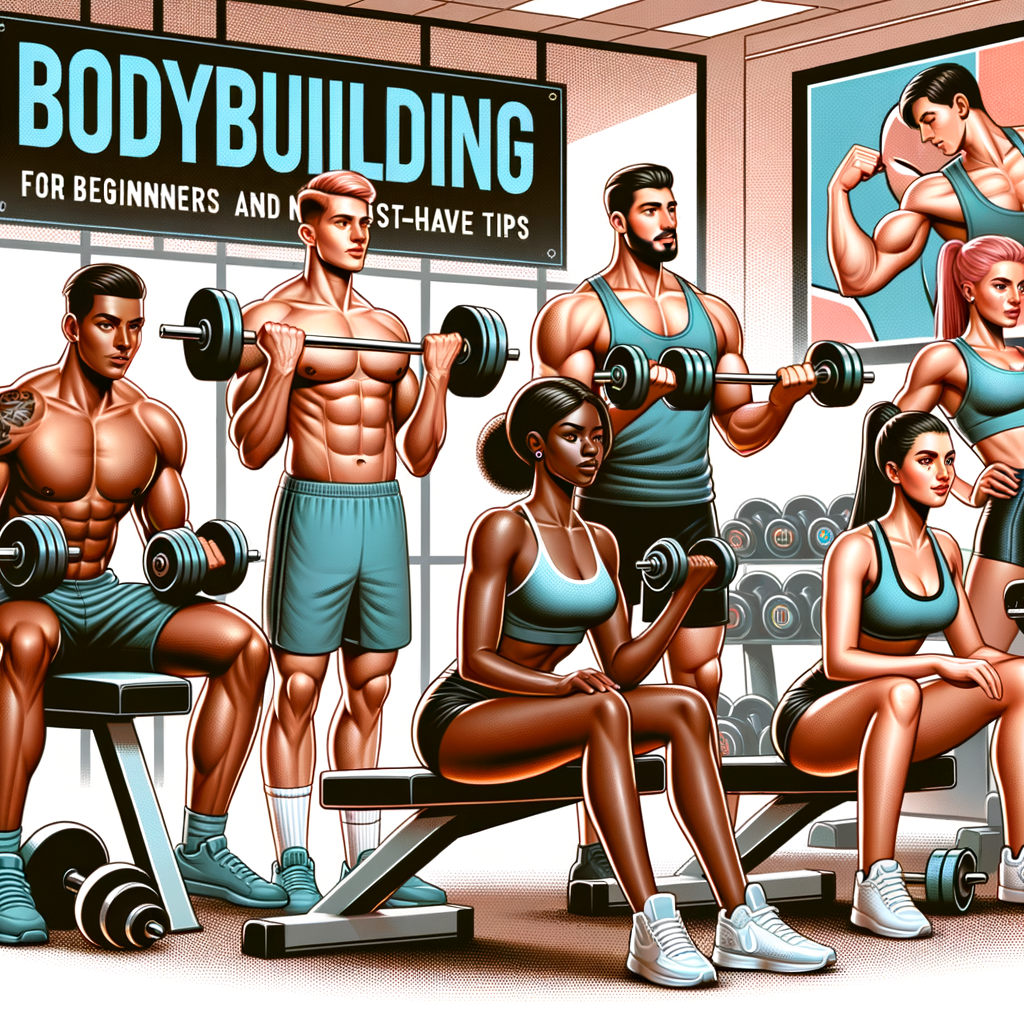Introduction
Bodybuilding nutrition makes or breaks your progress. If you want to build muscle and stay lean, food matters as much as the gym. This guide gives clear, practical nutrition steps for beginners. It focuses on real food, simple strategies, and habits you can follow daily.
You will learn about macronutrients, meal timing, supplements, and tracking. Also, I’ll show common mistakes and how to avoid them. By the end, you will have a ready-to-use plan to start seeing real gains.
Why Nutrition Matters in Bodybuilding
Food supplies the building blocks for muscle. Protein repairs muscle fibers after resistance training. Likewise, carbs provide energy for heavy lifts. Meanwhile, fats support hormones and recovery.
Nutrition also controls body composition. To gain muscle, you need a calorie surplus. To reveal muscle, you need a calorie deficit. Therefore, learning to manipulate calories and macros gives you control over results.
Understanding Calories and Energy Balance
Calories determine weight change. Eat more calories than you burn, and you gain mass. Conversely, eat fewer calories than you burn, and you lose fat. Keep that concept simple and consistent.
Start by estimating your maintenance calories. Then add 250–500 calories for a lean bulk. For cutting, subtract 250–500 calories. Adjust weekly based on progress.
Macronutrients: Proteins, Carbohydrates, and Fats
Macronutrients fuel performance and recovery. Each macro plays a specific role.
– Protein: builds and repairs muscle tissue.
– Carbohydrates: power workouts and replenish glycogen.
– Fats: support hormones and overall health.
Balance these macros to match your goals. For most beginners, a good starting split looks like this:
Example macro splits
| Goal | Protein | Carbs | Fats |
|——|———|——-|——|
| Lean Bulk | 1.6–2.2 g/kg bodyweight | 40–55% calories | 20–30% calories |
| Cutting | 1.8–2.5 g/kg bodyweight | 25–45% calories | 20–35% calories |
| Maintenance | 1.6–2.0 g/kg bodyweight | 45–55% calories | 20–30% calories |
Adjust values based on personal preference and training intensity. Track results and refine the numbers over time.
Protein: How Much and When
Aim for 1.6–2.5 grams of protein per kilogram of bodyweight daily. This range supports muscle growth and recovery. Beginners often do best near 1.8–2.2 g/kg.
Spread protein across 3–6 meals daily. Each meal should contain 20–40 grams of protein. That approach maximizes muscle protein synthesis repeatedly. Also, include a protein source within two hours after training.
Choose whole-food proteins like chicken, fish, lean beef, eggs, dairy, and legumes. Use whey or plant protein powders when you need convenience. They work well for shakes or post-workout nutrition.
Carbohydrates: Fuel for Performance
Carbs give you the energy to lift heavier and recover faster. Base your carb intake on training volume and bodyfat level. Higher volume and lower bodyfat both demand more carbs.
Prioritize complex carbs such as oats, brown rice, sweet potatoes, and whole grains. Add fruits and starchy vegetables for vitamins and fiber. Simple carbs can help right after intense workouts to speed glycogen replenishment.
Match carbs to workout timing. Eat a carb-rich meal 1–3 hours before training. That meal boosts available energy. Then have carbs with protein after training to support recovery.
Fats: Don’t Ignore Healthy Fats
Fats support hormone production and joint health. They also help you absorb fat-soluble vitamins. Aim for 20–35% of daily calories from fats.
Focus on unsaturated fats. Include foods like olive oil, avocados, nuts, seeds, and fatty fish. Limit trans fats and excessive saturated fats. Keep them to a minimum.
Ensure you get enough omega-3s. They reduce inflammation and may aid recovery. You can eat fatty fish twice weekly or take fish oil supplements.
Meal Timing and Frequency
Meal timing can improve training performance and recovery. Still, total daily macros remain most important. Eat meals that fit your schedule and hunger cues.
Pre-workout, eat carbs and protein 1–3 hours before training. Post-workout, have a meal or shake with both carbs and protein within two hours. This timing helps replenish glycogen and repair muscle.
Many athletes prefer 3–5 meals daily. However, some do well with intermittent fasting or two larger meals. Pick what helps you stay consistent.
Hydration and Micronutrients
Hydration affects strength and performance. Dehydration reduces strength, endurance, and mental focus. Drink water consistently throughout the day. Aim for at least 2–3 liters daily, more with heavy training.
Micronutrients play subtle but vital roles. Vitamins and minerals support energy production, recovery, and immune health. Eat a variety of colorful vegetables and fruits. Consider a basic multivitamin if you have dietary gaps.
Pay special attention to:
– Vitamin D (sun exposure or supplement)
– Calcium and magnesium (bone and muscle function)
– Iron (especially for women)
– Electrolytes if you sweat heavily
Supplements: What Helps Beginners
Supplements can support progress, but they do not replace food. Focus on a strong diet before adding supplements. Start with evidence-backed options.
Key supplements for beginners:
– Whey or plant protein powder: convenient protein source.
– Creatine monohydrate: boosts strength and muscle gains.
– Fish oil (omega-3): supports recovery and inflammation control.
– Vitamin D: helps many people with low levels.
– Caffeine: boosts performance when timed before workouts.
Avoid expensive blends with unproven ingredients. Also, check quality and third-party testing when possible.
Sample Daily Meal Plan for Beginners
Here’s a practical meal plan for someone aiming to gain muscle at about 2,800 calories. Adjust portion sizes to match your calorie needs.
Sample meal plan (approximate)
– Breakfast: 3 eggs, 2 slices whole-grain toast, 1 cup spinach, 1 banana
– Mid-morning snack: Greek yogurt, handful of mixed berries, 20 g nuts
– Lunch: Grilled chicken breast, 1.5 cups brown rice, mixed vegetables
– Pre-workout: Oatmeal with honey and a scoop of whey
– Post-workout: Protein shake with banana and water
– Dinner: Salmon (or tofu), sweet potato, green salad with olive oil
– Evening snack: Cottage cheese or casein shake with a few almonds
This plan emphasizes protein every few hours. It also includes carbs around training and healthy fats for hormones.
How to Track Progress and Adjust
Track weight, strength, and body measurements weekly. Also, take progress photos every 2–4 weeks. These records show real changes that numbers might miss.
If you gain too much fat, lower calories by 5–10%. If you stall on muscle gains, increase calories by 5–10%. Always adjust one variable at a time. That approach reveals what works for you.
Use a food tracking app for the first 8–12 weeks. Tracking teaches portion sizes and macro awareness. After you learn, you can relax tracking and follow habits.
Common Nutrition Mistakes Beginners Make
Beginners often overeat junk food while chasing calories. They gain fat, then lose motivation. Instead, focus on calorie-dense, nutritious foods when bulking.
Another mistake: neglecting protein. Many beginners eat too little protein for muscle growth. Also, they underfuel carbs and feel flat during training.
Finally, people expect instant results. Nutrition takes weeks to reveal changes. Stay patient and consistent. Small, steady improvements yield long-term results.
Creating a Sustainable Food Strategy
Pick whole foods you enjoy. Consistency beats perfection. You will follow a diet longer when it feels normal.
Plan meals around family and work schedules. Meal prep once or twice weekly to simplify busy days. Use bulk cooking for proteins, grains, and veggies.
Allow flexible treats occasionally. A planned cheat meal can help you stick to your regimen. Just avoid all-out bingeing. Keep treats controlled and infrequent.
Syncing Nutrition with Training
Nutrition should reflect your training goals. When you train heavy and often, eat more carbs. When you train less, reduce carbs slightly.
Strength training demands protein and calories for growth. Do progressive overload in the gym and support it with fuel. Recovery matters. Eat recovery meals and sleep well.
If you plan cardio for conditioning, account for the extra calories you burn. Add carbs and water on cardio-heavy days.
Adjusting for Vegetarians and Vegans
You can build muscle on a vegetarian or vegan diet. You will need to plan protein sources carefully. Combine legumes, grains, tofu, tempeh, seitan, and protein powders.
Aim for slightly higher protein targets if you eat plant proteins. Plant proteins often have lower digestibility. Consider supplementing with B12 and possibly creatine.
Also, pay attention to iron and zinc intake. Plant-based sources require pairing with vitamin C for better absorption.
Practical Grocery List for Beginners
Keep this list handy for consistent meals.
Proteins:
– Chicken breast, turkey, lean beef
– Eggs and dairy (or dairy-free alternatives)
– Fish (salmon, tuna)
– Tofu, tempeh, legumes
– Protein powder (whey or plant)
Carbs:
– Oats, brown rice, whole-grain pasta
– Sweet potatoes, potatoes
– Fruits: bananas, berries, apples
– Whole-grain breads
Fats:
– Olive oil, avocado
– Nuts and seeds
– Nut butters, fatty fish
Veggies and extras:
– Spinach, broccoli, bell peppers
– Onions, tomatoes, leafy greens
– Herbs, spices, vinegar
Simple Cooking Methods:
– Grill, bake, steam, stir-fry, or slow-cook for convenience.
Meal Prep Tips
Meal prep saves time and reduces poor choices. Cook proteins and grains in batches. Portion meals into containers for the week.
Use zip bags for pre-chopped veggies. Freeze meals you won’t eat within four days. Label containers with dates and contents.
Make a weekly plan. Decide breakfasts, lunches, and snacks on Sunday. This small step removes guesswork midweek.
Sample 8-Week Beginner Nutrition Plan
Week 1–2:
– Calculate maintenance calories.
– Start tracking food and aim for +250 calories for lean bulk.
– Prioritize protein; hit daily protein target.
Week 3–4:
– Maintain consistent meals and training.
– Add creatine 5 g daily if desired.
– Reassess energy and strength.
Week 5–6:
– Increase calories by another 5–10% if strength stalls.
– Add variety in fruits and veggies.
– Keep tracking progress photos.
Week 7–8:
– Evaluate body composition and strength.
– If you gained unwanted fat, reduce calories slightly.
– If progress continues, maintain or adjust goals.
Common Questions Not Answered Earlier (FAQs)
1) How fast should I expect muscle gains?
Beginners often gain 0.5–1.0% of bodyweight in muscle monthly. Men often gain faster initially. Women may build slightly slower. Genetics, training, sleep, and nutrition affect this rate.
2) Should I eat carbs at night?
Yes, you can eat carbs at night. Meal timing matters less than total daily carbs. If carbs at night help you meet calories and sleep better, include them.
3) How long should I stay in a calorie surplus?
Stay in a surplus until you reach your muscle goals or feel uncomfortable with added fat. Many choose 3–6 months. Then switch to a short cut if needed.
4) Can I build muscle while cutting?
Beginners and return-to-training lifters can build muscle while losing fat. However, progress is slower than when in a surplus. Prioritize protein and resistance training.
5) Is intermittent fasting bad for muscle growth?
Intermittent fasting can work if you hit total calories and protein. Some people prefer it for simplicity. Others struggle to eat enough protein in limited windows.
6) Do I need to cycle carbs?
You don’t need to cycle carbs. Carb cycling can help advanced athletes or those who stall. Beginners should first master consistent intake.
7) How important is meal frequency?
Meal frequency does not directly impact muscle growth if total macros are met. Choose a frequency that fits your lifestyle and keeps energy stable.
8) What if I hate tracking calories?
You can use portion rules: palm-sized protein, fist-sized carbs, thumb-sized fats. Track for a few weeks to learn portions, then eyeball meals.
9) How much creatine should I load?
You can do a loading phase: 20 g/day in four doses for 5–7 days. Alternatively, take 3–5 g daily without loading. Both methods saturate muscle stores eventually.
10) Are cheat days helpful?
Occasional cheat days can help with adherence and social life. However, frequent or extreme cheat days can undo progress. Keep them planned and moderate.
Conclusion
Bodybuilding nutrition requires clarity, consistency, and patience. Start with calorie control and adequate protein. Then add carbs for performance and fats for health. Track progress, adjust wisely, and prioritize whole foods.
Remember, supplements only complement a solid diet. Likewise, proper sleep and training matter as much as what you eat. Apply these basics for several months. Small, consistent actions create the biggest long-term gains.
References
– Academy of Nutrition and Dietetics. Position on protein intake and muscle health. https://www.eatright.org
– International Society of Sports Nutrition. Position Stand: protein and exercise. https://jissn.biomedcentral.com/articles/10.1186/s12970-017-0177-8
– Kreider, R., et al. International Society of Sports Nutrition position on creatine. https://jissn.biomedcentral.com/articles/10.1186/s12970-017-0173-z
– Helms, E., Aragon, A., Fitschen, P. Evidence-based recommendations for natural bodybuilding contest preparation. https://www.ncbi.nlm.nih.gov/pmc/articles/PMC2
– Nutrition.gov. Dietary Guidelines and hydration tips. https://www.nutrition.gov
– National Institutes of Health — Office of Dietary Supplements. Vitamin D fact sheet. https://ods.od.nih.gov/factsheets/VitaminD-HealthProfessional/
(Note: Some links are to general resources and institutional pages. For specific studies and position stands, search the titles on the referenced websites.)



